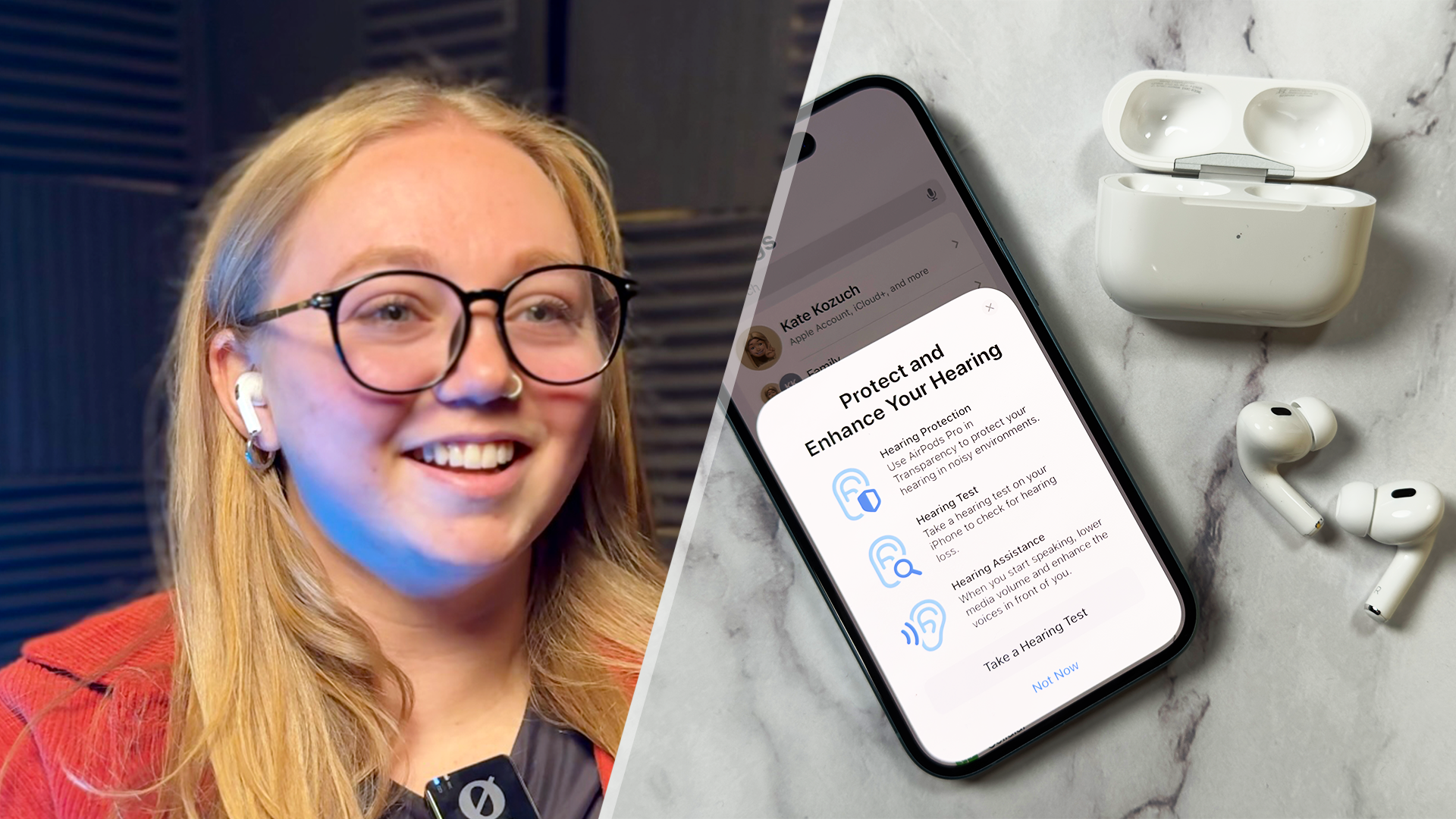
Twenty seven-year-old Gillian Lavelle never knew what she was missing out on, sound-wise, due to genetic hearing loss.
“I would always take a backseat if I was out with a group of friends in a place like this,” Lavelle said, referring to the bustling Manhattan coffee shop I intentionally chose for our first real-world test of new hearing health features for AirPods Pro 2. “I’d have to wait until we were in a quieter location to actually have, you know, meaningful conversations.”
@tomsguide ♬ original sound - Tom’s Guide
Lavelle, who also happens to be one of my life-long friends, has been aware about her hearing limitations since she was a toddler. But it never impacted her enough to “do something about it,” and she was never keen on “wearing something that signals to other people that something is wrong,” such as a traditional hearing aid.
More recently, she’s struggled with her graduate program lectures. Taking quality notes while simultaneously listening to the professor’s lecture isn’t just a pesky challenge, but an understandably fatiguing one.
So, when she heard the news from Apple’s September event about AirPods becoming FDA-approved OTC hearing aids, she reached out to me to learn more. Soon after, I met her with a pair of AirPods Pro 2 set up for the purpose of demonstrating the hearing health features. The hope? To give her an early taste of what she can expect when the new suite of hearing health features officially roll out the week of October 28.
Setting up AirPods Pro 2 as a Hearing Aid
There are three new hearing health features launching for AirPods Pro 2 users, but for the sake of our experiment, we focused specifically on the hearing test and hearing aid tools. We started with the hearing test, which was clinically validated with approximately 200 study participants for users 18 and older. It mimics the kind of audiogram you’d take with an audiologist, except you can take it from anywhere including the comfort of your own home.
Lavelle’s hearing test resulted in a diagnosis of mild hearing loss, with a hearing threshold above 20 dB HL indicating hearing loss. This confirmed that she’s one of the 1.5 billion people worldwide who experience some form of hearing loss, with a majority falling in the ‘mild-to-moderate’ category, per the WHO.
The fact that I haven’t had to ask you to repeat yourself while we’ve been sitting here is amazing.
Upon completing the test, Lavelle was prompted to use the results to establish personalized hearing aid settings. That’s when she could truly see — err, hear, what her comprehension of previously undetected sounds could be like going forward.
“It’s so cool, I’m not used to being able to hear this clearly,” Lavelle said. “Like, the fact that I haven’t had to ask you to repeat yourself while we’ve been sitting here is amazing. I’m really excited to use these features in more of my day-to-day life, I think it’s going to be really helpful for me.”
‘Millions of people are going to benefit from this.’
The bulk of my friend’s excitement during this experience occurred when I told her the AirPods Pro 2 she received as a gift last Christmas will be updated with these new hearing health features at no additional fee. “Seriously?” she gasped with a wide grin.
As with most software-related updates, it can take some time to build awareness around the new hearing health features. I’m guessing we’ll see a gradual adoption as people who have AirPods Pro 2 become aware that they don’t need to purchase new earbuds in order to take advantage.
“People think that way less people have [hearing loss] than actually do,” Lavelle said in response to my curiosity about hearing loss misconceptions. When I asked if she thinks the hearing health features she demoed matter, she said, “millions of people are going to benefit from this.”







